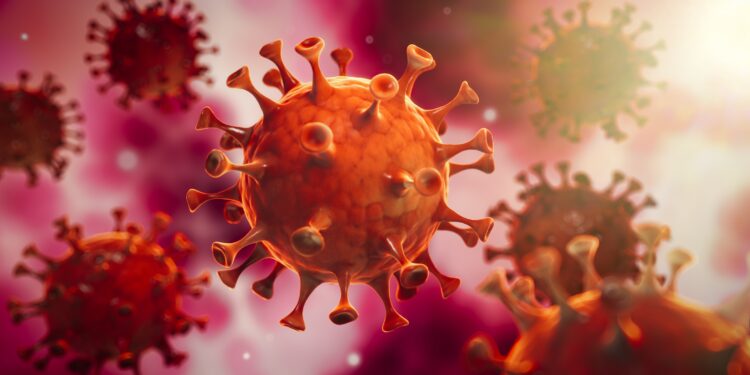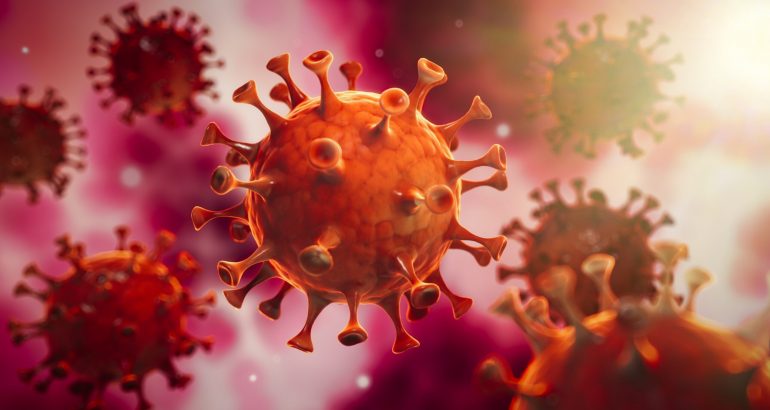
Virus: Scars long after infection
Not all viruses that affect humans actually make us sick. Nevertheless, there are significant diseases triggered by such pathogens. Until now it was believed that some viruses live permanently in infected cells of the body. But that is not the case, as researchers in Switzerland are now reporting.
Viruses do not always kill infected body cells. In experiments with mice, researchers at the University of Basel have found that cells have self-healing powers to eliminate viruses. But they tolerate long-term changes. The findings may provide clues as to why cured hepatitis C patients are vulnerable to liver cancer for years to come.
Not all viruses kill infected cells
like one Message As explained to the University of Basel, viruses need an infrastructure of the body’s cells to multiply. In the case of many types of virus, it is ultimately the end for the infected cell when their membranes dissolve and the newly created virus comes out to attack the new cells.
However, there are also viruses that do not kill infected cells – possibly with the aim of making the infection last as long as possible. These include, for example, the hepatitis B and C viruses, which cause chronic infections in humans.
Until now it was generally believed that such viruses would live permanently in the affected cells of the body. A research team led by Prof. Dr. Daniel Pinschever of the University of Basel now reports in the specialist journal “Journal of Experimental Medicine“That’s not the case.
For their experiments, the scientists used a mouse virus called lymphocytic choriomeningitis virus (LCMV), which – similar to the course of hepatitis C – causes chronic infection in mice and also affects the liver.
Persistent infection of new cells
With this animal model, the researchers were able to demonstrate that the virus disappears from infected liver cells after a certain period of time. How exactly this happens is still unclear. However, the scientists were able to rule out that the cells needed the support of immune cells for this.
“Liver cells seem to have a mechanism of their own to remove the virus from within,” Dr. Peter Reuther, one of the two first authors of this study. Chronic infection by such pathogens is based on the continuous infection of new cells.
Despite the amazing self-healing powers of cells, infection does not leave them without a trace. Further analyzes revealed that the genetic profile of the healed cells changed: the same genes were no longer read in as many numbers as in cells that had not been infected.
According to experts, genes related to cell division and cell metabolism were particularly affected by the change. However, how long these changes will continue is not yet clear.
Increased risk of cancer in healthy people
“We see strong parallels with other studies in cured hepatitis C patients. Your already infected liver cells show changes in the genetic makeup that affect genetic programs,” said Dr. Katrin Martin, also first author of the work.
This strongly suggests that the knowledge now gained on rats can be transferred to humans, at least at critical points. “One can speculate that these long-term changes are one reason why cured hepatitis C patients have an increased risk of liver cancer.”
In further studies, the researchers would like to test whether such changes in gene programs after temporary virus infection also affect cells in other organs. They also want to elucidate the mechanism by which the body’s cells manage to get rid of the virus.
“From a medical point of view, there are now two questions,” Pinschever says. “How do you prevent these viruses from reproducing from cell to cell in a case of chronic infection and thus affecting a large number of cells? And can a change in the genetic profile be reversed and the resulting damage prevented?”
The question of long-term changes after virus infection also affects other signs such as asthma and long-term covid. (advertisement)
Author and source information
This text complies with the requirements of specialist medical literature, medical guidelines and current studies and has been checked by medical professionals.
Source:
- University of Basel: Viruses leave their mark long after infection, (Accessed: 08/24/2021), Baselli University
- Peter Reuther, Katrin Martin, Mario Kreutzfeld, Mattias Ciancaglini, Florian Geier, Diego Calabrese, Doron Merkler and Daniel D. Pinschever: Persistent RNA virus infection is short-lived at the single-cell level, but leaves transcriptomic footprints; In: Journal of Experimental Medicine, (veröffentlicht: 16.08.2021), Journal of Experimental Medicine
Important Articles:
This article is for general guidance only and is not to be used for self-diagnosis or self-treatment. He cannot take the place of visiting the doctor.

Web guru. Amateur thinker. Unapologetic problem solver. Zombie expert. Hipster-friendly travel geek. Social mediaholic.





